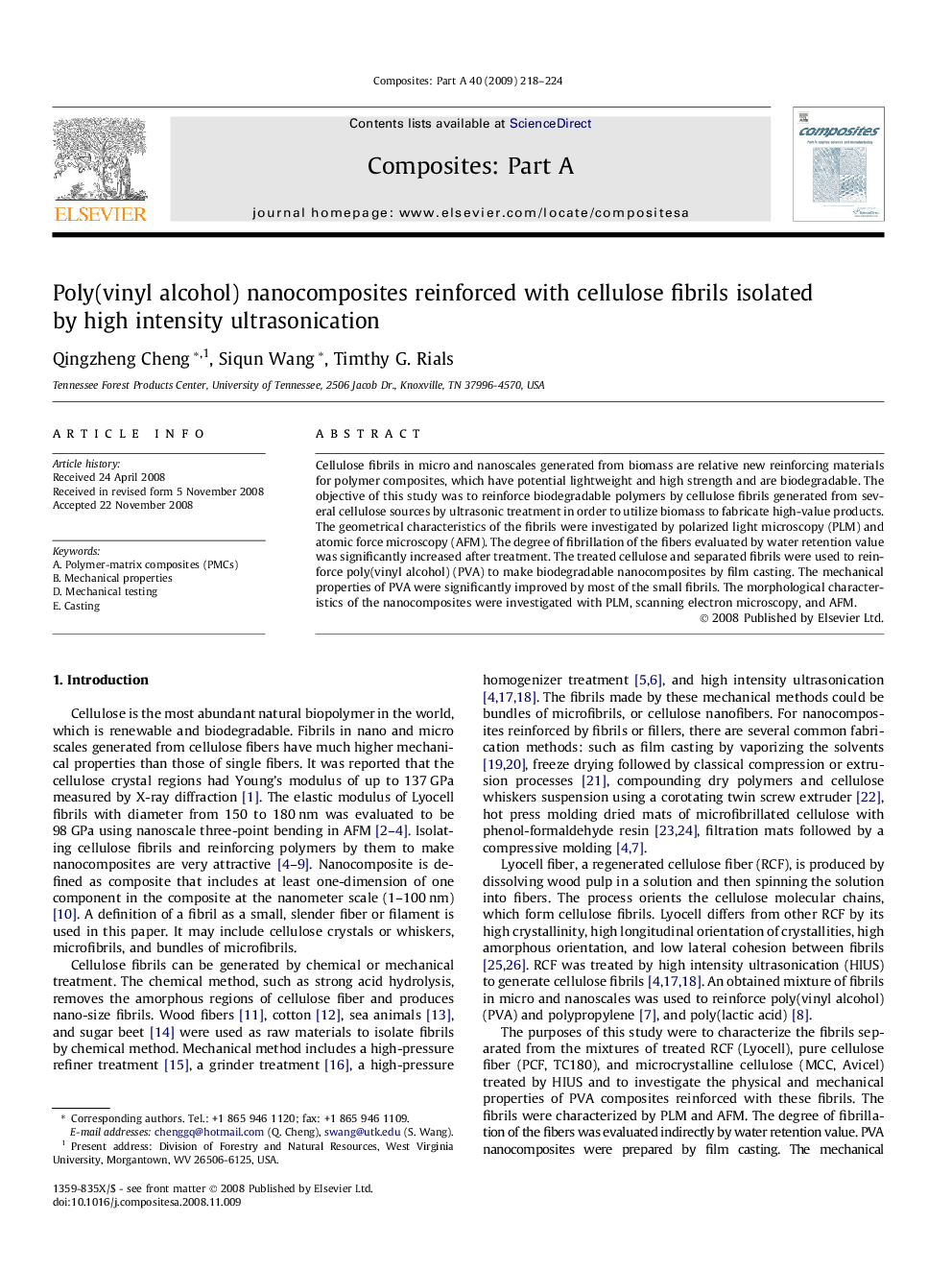| Article ID | Journal | Published Year | Pages | File Type |
|---|---|---|---|---|
| 1467433 | Composites Part A: Applied Science and Manufacturing | 2009 | 7 Pages |
Cellulose fibrils in micro and nanoscales generated from biomass are relative new reinforcing materials for polymer composites, which have potential lightweight and high strength and are biodegradable. The objective of this study was to reinforce biodegradable polymers by cellulose fibrils generated from several cellulose sources by ultrasonic treatment in order to utilize biomass to fabricate high-value products. The geometrical characteristics of the fibrils were investigated by polarized light microscopy (PLM) and atomic force microscopy (AFM). The degree of fibrillation of the fibers evaluated by water retention value was significantly increased after treatment. The treated cellulose and separated fibrils were used to reinforce poly(vinyl alcohol) (PVA) to make biodegradable nanocomposites by film casting. The mechanical properties of PVA were significantly improved by most of the small fibrils. The morphological characteristics of the nanocomposites were investigated with PLM, scanning electron microscopy, and AFM.
